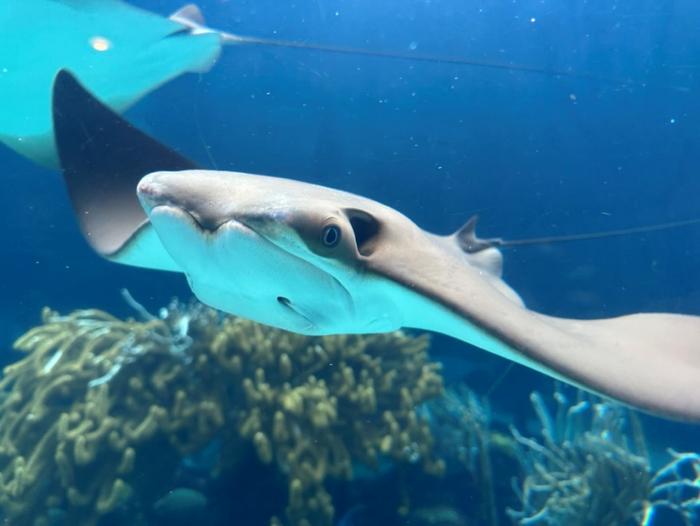Bermuda, a group of remote oceanic islands and coral reefs, has long been known for its lone inshore stingray species, the whitespotted eagle ray (Aetobatus narinari).
However, a study led by researchers from Florida Atlantic University’s Harbor Branch Oceanographic Institute has revealed that the Atlantic cownose ray (Rhinoptera bonasus) has recently made Bermuda its new home. This discovery marks the first time in hundreds of years that a new stingray species has been documented in the island nation.
Citizen Science and Collaborative Efforts Uncover New Resident
The research team, in collaboration with various institutions, compiled recent information on cownose rays in Bermuda using a combination of citizen science, photographs, on-water observations, and morphological and genetic data. By extracting DNA from tissue samples of five individual cownose rays between 2021 and 2022, the researchers confirmed the species as R. bonasus, providing solid evidence of this novel migration.
Matt Ajemian, Ph.D., lead author and associate research professor at FAU Harbor Branch, emphasizes the importance of further research to determine the extent of the cownose ray population in Bermuda. “We don’t exactly know how many Atlantic cownose rays are actually present in Bermuda and whether it’s a single group that keeps getting re-sighted in various locations or whether the species is more broadly distributed across inshore sounds and harbors,” he explains.
Potential Mechanisms Behind the Unexpected Migration
The study suggests that various factors, such as temperature and oceanographic conditions, may have facilitated the recent expansion of Atlantic cownose rays to Bermuda. Ajemian notes that atmospheric conditions, including wind and extreme weather events, have been shown to trigger abnormal migratory behaviors in other large marine animals, such as loggerhead sea turtles.
Interestingly, the North Atlantic Ocean experienced a pronounced southward shift in unusually strong westerly winds during the winter of 2010, preceding the first claimed sighting of cownose rays in Bermuda. This climatological anomaly and associated oceanographic changes may have played a role in shifting cownose rays eastward from their established range.
Ajemian humorously draws a parallel between the cownose rays’ journey and the shipwreck of the Sea Venture in 1609, suggesting that the rays may have encountered bad weather and found their new paradise in Bermuda, just as the ship’s crew and passengers did.
The study’s findings indicate that cownose rays have been present in Bermuda for more than a decade, with observations continuing to this day. As researchers work to assess the current population size and understand the potential mechanisms behind this unexpected migration, they remain cautious of the potential competition between the cownose rays and the protected whitespotted eagle ray, given the limited space in Bermuda’s waters.
This groundbreaking discovery not only adds a new species to Bermuda’s marine fauna but also highlights the importance of collaborative research efforts and citizen science in uncovering the ever-changing dynamics of our oceans. As climate change and other factors continue to influence the migration patterns of marine life, studies like this one will be crucial in understanding and protecting the delicate balance of our aquatic ecosystems.


